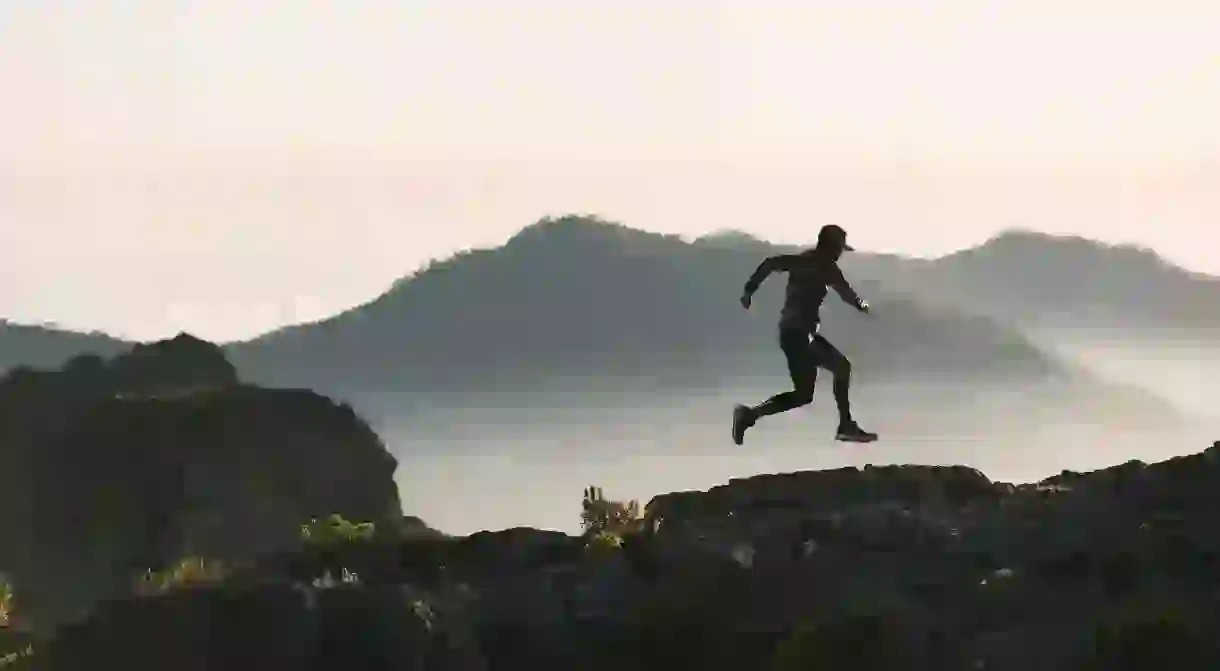Best UK Trail Running Routes for 2018

Taking on trails, climbing mountains and racing through woodland, we’ve partnered with Decathlon UK – recent recipients of Running Magazine’s Running Retailer of the Year – to bring you some of the UK’s best running spots to get stuck into in 2018.
Inveroran to Kinlochleven, Argyll
As part of the West Highland Way, this run is one of a number of different options along a route that stretches nearly 100 miles in total. Although the surrounding environment is a mixture of bog, heather and mountains, the actual path to run on is reassuringly flat and even for the first part, with conditions that lend themselves to novices or those looking for a casual run where you can pop your headphones in and zone out. The second part of the run has a short climb, followed by a long, drawn out ascent. The views are utterly spectacular, but conditions in this part of the world can get windy or even icy so wrap up warm and plan accordingly.

Pendeen to St Ives, Cornwall
This coastal run provides about as beautiful a route as the UK will offer, taking runners from the old mining village of Pendeen to the popular surfing spot of St Ives. The ground underfoot offers a bit of everything, with road, paths, and slopes covered in an abundance of heather. Those willing to give it a go should be experienced and have good stamina, particularly as the ground can get quite boggy at times. There’s plenty of climbing and descent, constantly going up the moors and back down into exquisite little coves. The route is a half marathon – by pure distance – but the constant changes in elevation make it much tougher. Definitely a challenge, but well worth it.

Great Eastern Pingo Trail, Norfolk
At 5.7 miles, the Great Eastern Pingo Trail is a short and sweet woodland route that cuts through the local meadows that sit roughly half way between Norwich and Thetford. The trail’s paths widen and narrow throughout the route and there is a small amount of steps along the way, but on the whole this is a very straightforward trail along the old railway. The trail takes its name after the pingo ponds – mounds of earth-covered ice that have melted away over time to leave holes filled with water. Although short, runners will need to work out the correct route of the trail as it can be little confusing first time round.

Three Cliff Bay, Gower, Wales
Popular with rock climbers, this part of the Gower Peninsula in southern Wales provides a a number of lovely runs, especially when the tide is out and you can be on the bay itself. If the tide is out then you can get from Three Cliff Bay to Oxwich Bay, factoring in some peaks before or afterwards (depending on which way you go). Be prepared to get wet because at some point you’ll have to cross Pennard Pill, the stream that passes through.

Clumber Park, Nottinghamshire
Great for beginners, this 3,800-acre park is full of tarmacked and woodland paths and even if you want to go off pathways there’s nothing to strenuous that you’ll come across. The park is mostly flat with the odd incline dotted about; how far you run completely depends on the route you choose to take. Running through mainly woodland means it can get a little bit dark at times, but as long as you and your route is lit up, early morning or evening runs should still be fun. Those looking for something a little more structured can opt in for the annual Clumber Park 10k held each summer.

Croyde, Cornwall
Another popular surf spot, Croyde is a particularly beautiful part of an already outstanding Cornish coastline. A route from Croyde Bay to Baggy Point, via Putsborough, provides a mixed trail, most of which is along the coast. Although the 4.6 mile route is hilly and varied, it’s still relatively manageable for most runners and there’s normally a strong wind coming off the sea which can feel refreshing on a hot day, but far more testing in the winter months.

Mourne Mountains, Northern Ireland
Home to what is arguably Northern Ireland’s toughest long distance race, the Mourne Skyline Mountain-Trail Race, as well as its own marathon, this area also happens to be one of the most scenic. The race itself is 21.7 miles over nine separate peaks, all of which adds up to over 300m of elevation in total, but feel free to pick out individual sections that offer a slightly easier alternative (unless you’re actually competing in the race, of course). A huge number of paths and trails intersect the mountains, with the western half offering lower peaks and the eastern – the ‘High’ Mournes – providing a sterner test, especially in chillier weather.














